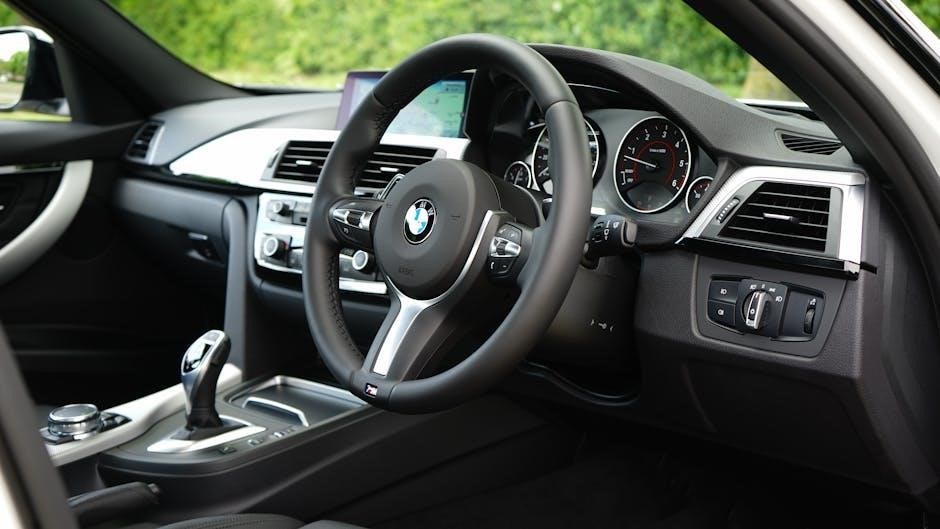
The 7-speed manual transmission is an advanced system designed to optimize engine performance and efficiency, offering drivers enhanced control and a more engaging driving experience on today’s roads, improving acceleration.
Brief Overview of Manual Transmissions
Manual transmissions, often referred to as stick shifts, are a type of car part that lets the driver choose the car’s speed by shifting gears using a gear stick and clutch pedal, offering a direct mechanical connection between the engine and wheels. Unlike automatics, they require the driver to manually select gears, providing greater control over engine speed and power delivery. This direct control can translate to a more engaging driving experience, favored by enthusiasts.
However, manual transmissions demand more skill and coordination compared to automatic transmissions. Mastering the art of shifting gears smoothly, coordinating clutch engagement, and managing engine speed can be challenging for novice drivers. Despite the learning curve, many drivers appreciate the enhanced control and connection with the vehicle that manual transmissions provide, offering a raw and unfiltered driving experience. Manual transmissions also typically offer superior fuel efficiency compared to automatics due to the direct mechanical connection.

Advantages of 7-Speed Manual Transmissions
A 7-speed manual transmission provides improved acceleration, keeping the engine in the optimal power band. Increased fuel economy is also achievable by selecting the most efficient gear ratio to current conditions.
Improved Acceleration
The primary advantage of a 7-speed manual transmission lies in its ability to enhance vehicle acceleration. This improvement stems from having more gear ratios available to the driver, allowing them to keep the engine operating within its optimal power band. By selecting the appropriate gear for any given situation, the driver can maximize torque output, resulting in quicker and more responsive acceleration.
This is particularly beneficial during overtaking maneuvers or when merging onto highways, providing the driver with the confidence to accelerate swiftly and safely. The closer gear ratios also reduce the drop in engine speed between shifts, maintaining momentum and contributing to a smoother, more continuous acceleration experience, better performance.
Enhanced Fuel Efficiency
Beyond improved acceleration, a 7-speed manual transmission can also contribute to enhanced fuel efficiency. The increased number of gear ratios allows for a more precise matching of engine speed to vehicle speed, enabling the driver to select the most efficient gear for the current driving conditions.
Specifically, the taller gear ratios available in a 7-speed transmission can allow the engine to operate at lower RPMs while cruising at highway speeds, reducing fuel consumption and minimizing emissions. This is particularly advantageous during long-distance driving, where maintaining a consistent speed can significantly impact fuel economy. By optimizing engine operation, the 7-speed manual transmission helps drivers save fuel.

Disadvantages of 7-Speed Manual Transmissions
While offering several benefits, 7-speed manual transmissions also come with potential drawbacks, including increased complexity and cost, which can impact both the manufacturing process and driver experience on the road.
Increased Complexity and Cost
The intricate design of a 7-speed manual transmission inherently leads to greater complexity compared to transmissions with fewer gears. This complexity translates directly into higher manufacturing costs, impacting the final price of vehicles equipped with this advanced system. The increased number of components and tighter tolerances require more sophisticated engineering and production processes.
Furthermore, the specialized knowledge and equipment needed for maintenance and repairs contribute to the overall cost of ownership. Finding qualified technicians capable of servicing these transmissions can be more challenging, potentially leading to higher labor rates. This complexity affects not only the initial purchase but also the long-term expenses associated with owning a vehicle with a 7-speed manual transmission.
Steeper Learning Curve
Mastering a 7-speed manual transmission presents a steeper learning curve compared to transmissions with fewer gears. The increased number of gears requires drivers to develop a heightened sense of timing and coordination to execute smooth and efficient shifts. New drivers may find it challenging to adapt to the shorter gear ratios and the need for more frequent shifting.
The precise clutch control and throttle modulation necessary for optimal performance can take time and practice to perfect. Stalling the engine or experiencing jerky shifts are common occurrences for beginners. The added complexity can be daunting for those accustomed to simpler manual transmissions or automatic vehicles, demanding a greater commitment to learning and adaptation.

Comparison with Other Transmissions
The 7-speed manual transmission stands out with its unique balance of performance and efficiency. It is crucial to compare it against other transmission types to understand its specific advantages and disadvantages in various driving scenarios.
7-Speed Manual vs. 6-Speed Manual
Comparing a 7-speed manual transmission to a 6-speed variant reveals distinct performance and efficiency trade-offs. The addition of an extra gear in the 7-speed allows for finer-tuned gear ratios. These ratios can optimize engine performance across a wider range of speeds. This usually translates to slightly improved acceleration and enhanced fuel economy, especially at highway speeds.
However, the increased complexity of the 7-speed can lead to a steeper learning curve for drivers. The need to manage an additional gear shift requires greater coordination and skill. Furthermore, the 7-speed transmission often comes with a higher initial cost and potential maintenance expenses. The choice between a 6-speed and a 7-speed often depends on driving preferences and priorities. Drivers should consider whether the added complexity and cost are justified by the potential gains in performance and efficiency.

Driving Experience
The driving experience with a 7-speed manual transmission provides a greater sense of connection. Drivers experience enhanced engine control, allowing for precise gear selection and optimal power delivery on the open road today.
Enhanced Engine Control
One of the primary benefits of a 7-speed manual transmission is the enhanced level of engine control it offers to the driver, especially when compared to an automatic transmission system. With a manual transmission, drivers have direct command over gear selection, enabling them to precisely match engine output to driving conditions. This direct connection allows for optimal power delivery, whether accelerating, decelerating, or navigating challenging terrain. The ability to choose the precise gear provides a more engaging and responsive driving experience, particularly for enthusiasts who enjoy feeling connected to their vehicle. Drivers can also maximize fuel efficiency by selecting the most appropriate gear for the current speed and load, leading to potential savings at the pump. The tactile feedback and direct control contribute to a more immersive and rewarding driving experience, enhancing the overall enjoyment of the road.